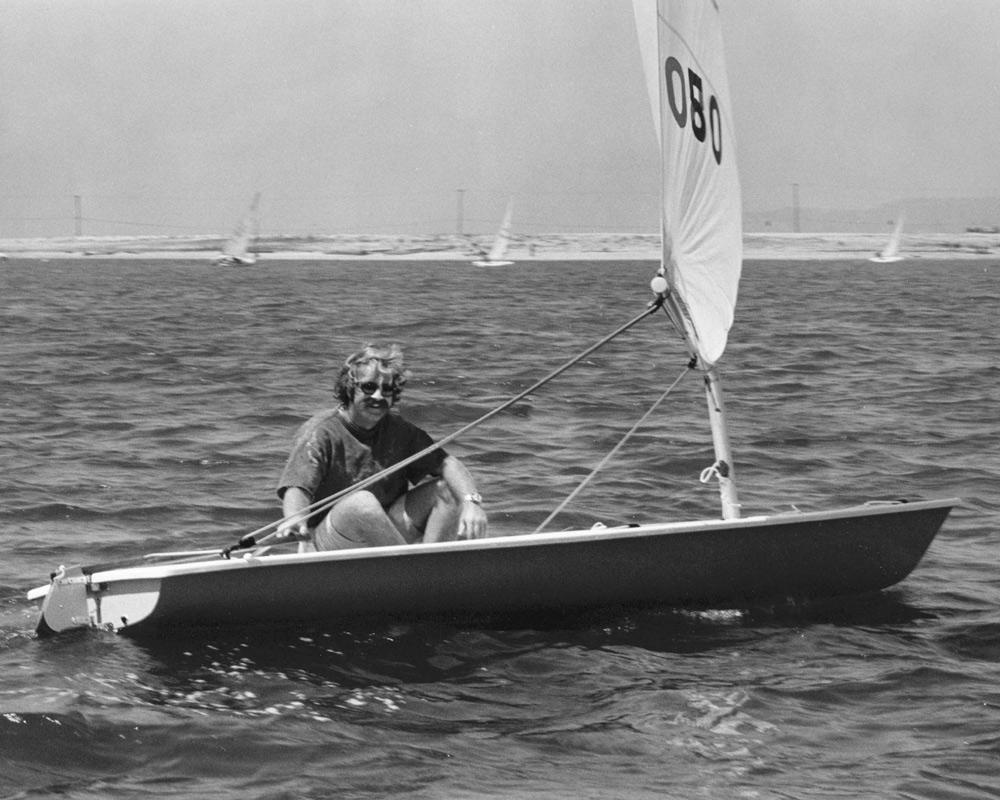When it comes to safety, it’s up to you to make the call

It seems a contradictory statement to make in a magazine issue dedicated to safety, but the fact is this: None of us are getting out of here alive. We all have a “sell-by” date, time and place unknown. It’s up to each of us to make it to that point where, in a grocery store, milk would be taken off the shelf, and perhaps a little longer if we’re careful. But it’s going to depend entirely on your own personal responsibility.
I am the poster child for personal responsibility. I believe that we hold our destiny in our hands, and we can use it or abuse it as we see fit. And for that reason, I believe that all sailors should follow their own beliefs when it comes to personal safety. This is the safety-at-sea issue, and there are other articles and features about how to keep ourselves safe when we venture out on the wide waters.
The government, any government, feels differently. They see us, and often particularly sailors, as Darwinian throwbacks who are incapable of tying our own shoelaces, let alone surviving a day on the water. A landlubber example came to me when I was reading the label on a bottle of coconut-flavored shampoo. It had a government-mandated warning: “Do not use as a food additive to flavor foods.”
Really? Perhaps in a true Darwinian society, we should encourage some people to flavor their dessert with shampoo. And have several helpings.
The government wants to protect us from ourselves, mandating that we have all sorts of equipment to help us survive, and I have no problem with most of it. Life jackets can help you survive, no question about it. Flares can save lives, fire extinguishers are
a no-brainer.
But it still comes down to personal responsibility. As a kid, I sailed an 8-foot dinghy all over Southern California waters with nothing more than one of those square life cushions. I didn’t even own a life jacket. Neither did the

other kids, and I don’t remember hearing of any dreadful incidents. When my father pushed me off on my first solo in that pram, he didn’t preach any safety gibberish to me. He said, “Sail smart,” gave me a wink, and pushed me off. He trusted me with my own personal responsibility.
I went ass-backward over the rail of an ocean racer on a particularly dark night once, and all I had was a tiny battery-powered “rescue light” which was so dim that when I tried to read my watch with it, I couldn’t. That rescue light was securely attached to my safety harness that clearly hadn’t been clipped on to anything and, there again, personal responsibility. I thought I was immortal.
Luckily, our crew had trained over and over for just such a possibility and they yanked my soggy rear over the rail in no time. I had dallied with my personal responsibility and might not have met my sell-by date.
I capsized my Finn on San Francisco Bay during the Zellerbach Heavy Weather Series and couldn’t get it back up. I wasn’t missed until the boats were back at the clubhouse. I had a life jacket, but it could barely keep me afloat with my layers of sweatshirts that increased my hiking weight. I was in very cold water, swallowing a lot of San Francisco Bay, and nearly didn’t reach my sell-by date.
In Florida, two young boys went out in a center console in iffy conditions and were sadly lost. They had life jackets but weren’t wearing them. The Florida legislature, in its foolishness, has passed a law that will give owners of boats the size of a dinghy a $3.92 discount on boat registration if they buy a $300 locator beacon. I mean, really! $3.92?
Life jackets can be good and they can be bad. When they’re good, they keep your head above water until someone yanks you out. When they’re bad, they can trap you underwater, as in several instances of sailors pinned under a capsized catamaran trampoline or in the rigging of a capsized dinghy.
If you take your personal responsibility seriously, you’ll decide when you need a life jacket. On a sunny afternoon sailing between anchorages in the British Virgins on a bareboat charter, with the water temperature at 70 degrees and mild winds, well, no … I’m not going to wear my life jacket.
On the other hand, somewhere off Scotland in a gale, will I be wearing my life jacket? My personal responsibility elf will be screaming at me to reach my expire date, and I’ll probably sleep in my life jacket.
But while I make my own decisions about life jackets, I’m the proud owner of a Personal Locator Beacon. I bought it at West Marine for $250 bucks and consider it money well spent. Activate it anywhere in the world and it tells rescue services where I am within a few feet. I can take it while sailing on my own boat, on bareboat charters or, in particular, when I’m testing a boat offshore with often goofy people running the boat.
So there you have my take on safety at sea. It’s up to you. If you want to make it to your shelf date, take your personal responsibility seriously. It doesn’t matter whether you’re 8 years old or 80 years old, it’s always your choice. Go to sea in bad conditions at your own risk. Wear a life jacket or don’t. Carry a locator beacon or not.
Those politicians making laws in their ivory towers aren’t going to save you. You have to take your personal responsibility seriously if you want to make it to your sell-by date.

Comments